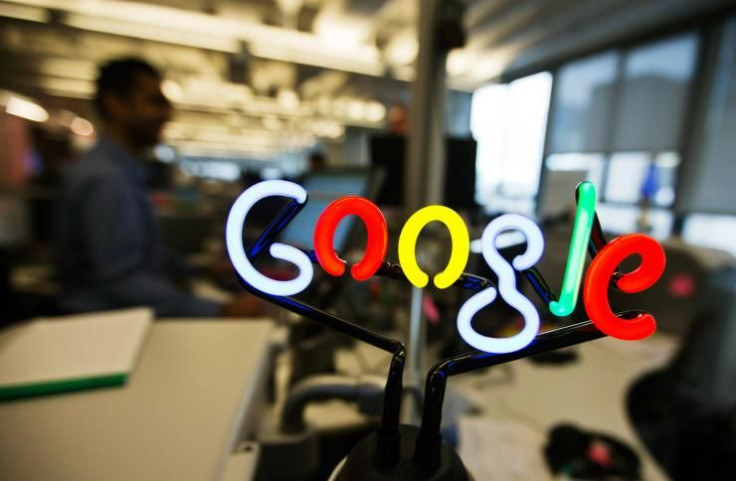Google (GOOG) Releases Faster Mobile Web Browsing In New Open-Source Initiative With Twitter And 38 News Organizations

We're increasingly living in a mobile world, and Google wants to make it a better experience. The search giant on Wednesday announced an initiative called "Accelerated Mobile Pages" (AMP) that makes viewing news articles on a smartphone even faster, the company said at a New York City event.
The recently renamed Alphabet Inc. (NASDAQ: GOOG) has partnered with 38 media outlets worldwide, including the New York Times, the Washington Post and BuzzFeed, to create versions of their article pages on the Web that load on phones instantaneously, to be followed later by the ads and other content code that is not modified for the AMP system. Google pitched the project as building a "library of content" that is more universally and instantly accessible.
"The Web today is not fully satisfying the user experience ... pages load slowly ... advertising, which is the lifeblood of many companies on the Web, often presents an experience that's annoying rather than helpful," Richard Gingras, Google’s head of news and social products, said. "These things can change."
Time spent on mobile devices, including smartphones and tablets, is expected to reach 2 hours and 54 minutes per day, according to new research from eMarketer. That's more time than people spend staring at PCs or laptops (2 hours, 14 minutes).
Faster Mobile
What is the ideal access speed for mobile reading? "Instant," Gingras said. Google will achieve that through presenting sites as cached Web pages, called “AMP” files. Media partners that use Google’s new system will have their pages load in about a second when readers access them via Google on mobile.
Twitter (NYSE: TWTR) also partnered with Google to allow the same function on the Twitter mobile app. When users elect to use Google as a web browser on Twitter, the pages of media partners will load instantly under the same system.
As with Facebook Instant Articles, this project is intended to improve the consumer experience of faster Web browsing. Last month before a room of advertisers and marketers, Facebook COO Sheryl Sandberg pitched the initiative as alleviating the reader drop-off that comes from having to wait an average of 8 seconds for a page to load.
Google’s project is open-source, meaning that partners can iterate on the technology instead of relying on a standard system. "Any publisher no matter their size has that opportunity to present their content,” Google’s Gingras said. “Open-source is important for allowing us to do this.”
That’s one way in which the system differs from Facebook Instant Articles. Launched in May, Facebook's initiative requires publishers to use a separate content management system to upload their content to Facebook. Google’s system is simply an additional HTML code.
Facebook had nine launch partners, and nearly 30 have signed on since and chosen different strategies for what to distribute. For instance, the Washington Post has elected to upload all its articles to Facebook.
Search vs. Social
However, the Washington Post is also a launch partner on Google’s project. That idea is part of the fragmented ecosystem that digital media companies have embraced in an effort to maintain readership as more consumers get their news content from mobile and social networks rather than a print product or a media outlet’s desktop homepage.
Cory Haik, the Washington Post’s executive director of emerging news products, emphasized that Google’s product is for better browsing from the Web while Facebook’s system and Apple’s News app are based on app discovery.
“They’re different initiatives. [Google’s AMP] is a mobile Web standard. If we have an article that’s shared on Facebook and not instant-fied … it still can be AMP,” Haik said. “This is a real opportunity to solve problems on the Web. We want to find audiences wherever they are."
Media outlets are continuously adapting to providing more mobile-first products. Sixty percent of the Post’s readers are on mobile, Haik said, and the company has created several native apps for its content. Nearly 75 percent of mobile users in the U.S. use smartphones, according to data from comScore. Over 60 percent of Facebook and Twitter users report getting their news from social networks, Pew Research reports.
Building The ‘Lifeblood’
For now, Google does not have an advertising revenue share based on the AMP Project. Publishers in Facebook Instant Articles get to keep 100 percent of the revenue when they sell their own ads or 70 percent if Facebook sells them.
For sites that use AMP, the page’s native content -- meaning text, video, tweets and Vines (with Twitter’s partnership in the code) -- will load first and be followed by ad experiences and the embed codes of sites that are not yet partners, such as Facebook. Therefore, a Web page’s load time will depend on these additional layers.
“Ads actually fund content. It’s really important that ads work really well on this model,” David Besbris, Google’s vice president of engineering for search.
According to Google’s team, the algorithm will not favor a site using Google’s open-source project. That move is a striking departure from the company’s April update to the algorithm that does favor sites already configured for mobile viewing.
© Copyright IBTimes 2024. All rights reserved.





















